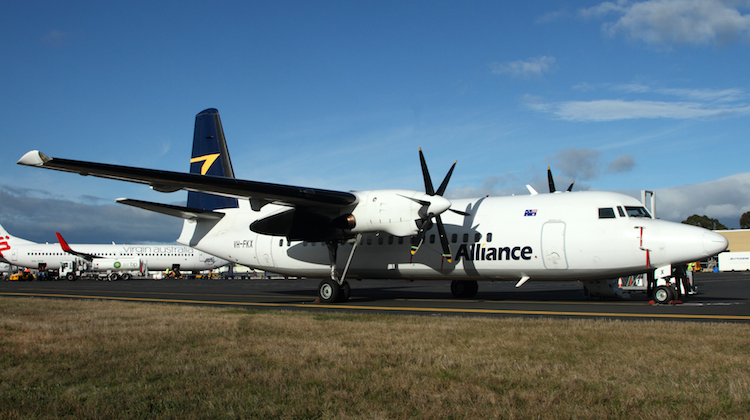Alliance Airlines says the focus for the year ahead is on securing more non-mining work and reducing costs amid a “sustained downturn in the resources industry” after posting a full year $36.6 million statutory net loss in 2014/15 due to fleet writedowns and other one-off charges.
The full year result was impacted by the first half charge taken on the carrying value of the fleet, as well as restructuring costs for sending its Fokker fleet overseas for heavy maintenance, one-off costs from the sale of two Fokker 100s and staff redundancies.
The $36.6 million net loss for the 12 months to June 30 2015 was down from net profit of $10.3 million in the prior year.
When the impairment charges and other one-off items were excluded, Alliance said underlying net profit after tax was $13.2 million for 2014/15, which was broadly in line with company guidance and up from $10.9 million a year earlier.
Revenue was down slightly at $199.4 million, from $200.2 million in the prior year, due to the lower fuel prices, Alliance said on Thursday, given fuel savings and increases are passed through to customers in most of the company’s long-term contracts.
“There is likely to be limited growth in long-term contract revenue in the resources sector,” the company said in its full year results release on Thursday.
“The financial outlook for Alliance for the year ended 30 June 2016 is a product of moderating contracted revenues, developing the ad-hoc charter market, new revenue sources and reducing expenditure, in particular capital expenditure.”
Lower capital expenditure was expected to come from the outsourcing of heavy maintenance to a Lufthansa subsidiary in Austria, which resulted in the end of heavy maintenance work at Brisbane and Adelaide.
At June 30, Alliance had 25 aircraft in service comprising 13 Fokker 100s, seven Fokker 70s and five Fokker 50s. In May, the company sold two Fokker 100s for $15.1 million. In August, Virgin confirmed it was the buyer of the two Fokker 100s.
“The rationalisation of the F100 fleet over the past 12 months and the change in the mix of aircraft will allow Alliance to respond to the needs of its customers and secure new opportunities as and when they arise,” Alliance said.
“Alliance has sufficient aircraft to meet the forecast in future years with some additional capacity to secure any new opportunities, particularly outside of the traditional FIFO peak between Tuesday and Thursday.”











